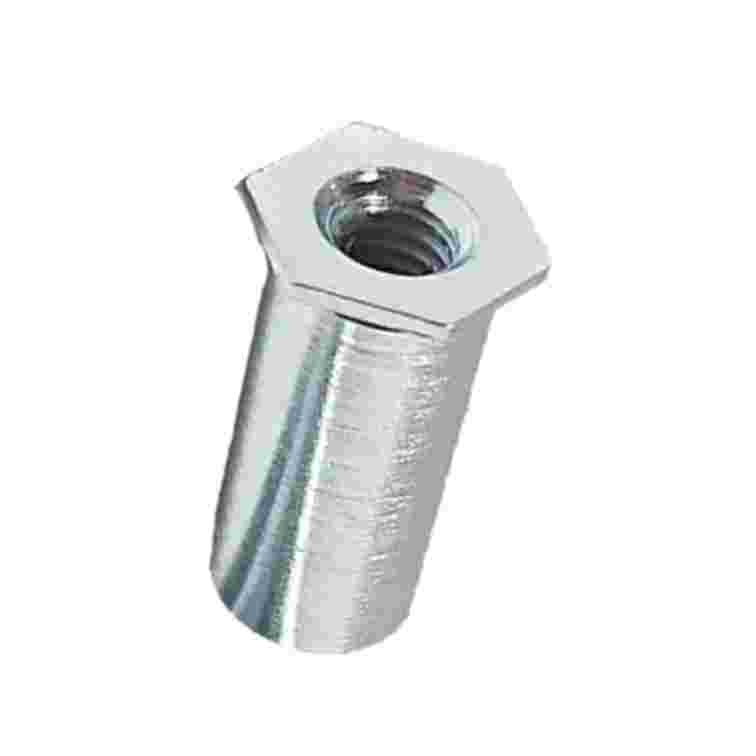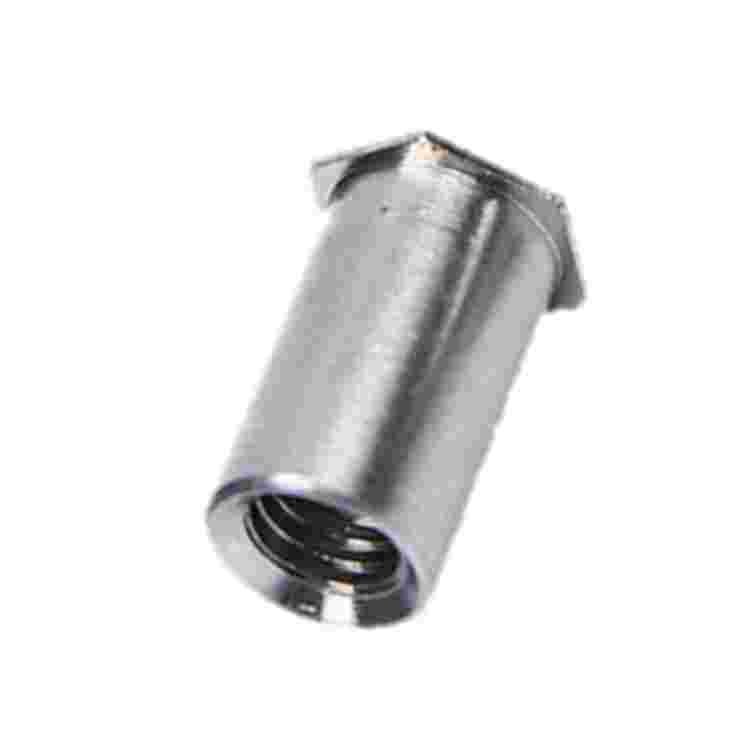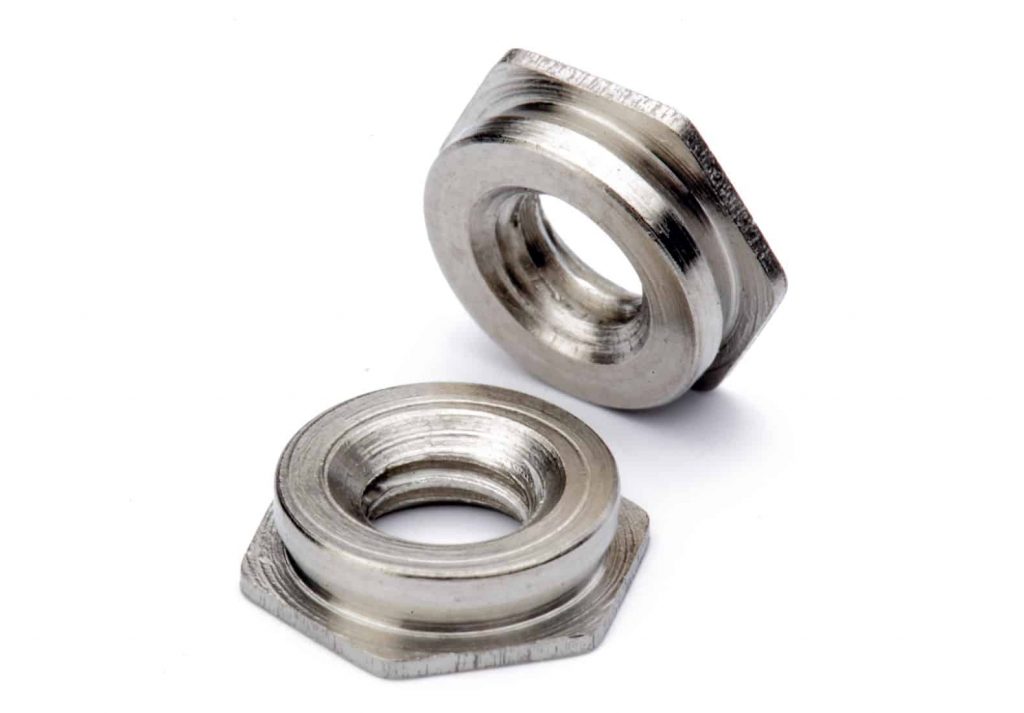Self-Clinching Fasteners: A Guide to Clinch Nuts, Clinch Studs, Standoffs, Blind Fasteners, and Flush Nuts
Self Clinching Fasteners
Self-clinching fasteners are an innovative solution for providing strong, permanent threads in thin materials, without the need for external hardware. They are ideal for use in sheet metal and other thin materials, providing a cost-effective and efficient way to attach components without damaging the material or requiring additional hardware.
Self-clinching fasteners come in a variety of types, including clinch nuts, clinch studs, standoffs, self-clinching blind fasteners, and flush nuts. Each type has its own unique advantages, making them suitable for different applications.
Advantages of Self-Clinching Fasteners:
-
Strong and Permanent Threads: Self-clinching fasteners create strong and permanent threads in thin materials, providing a secure and reliable attachment point for components.
-
No Need for External Hardware: Self-clinching fasteners eliminate the need for external hardware, such as nuts and bolts, reducing the number of components and simplifying the assembly process.
-
Cost-Effective: Self-clinching fasteners are a cost-effective solution, as they require less material and labor than traditional fastening methods.
-
Improved Assembly Time: The installation of self-clinching fasteners is quick and easy, reducing assembly time and increasing production efficiency.
-
Low Profile: Self-clinching fasteners have a low profile, making them ideal for use in applications where space is limited.
-
Minimal Damage to Material: Self-clinching fasteners create threads in the material without damaging the surface, maintaining the integrity of the material and providing a clean and professional finish.
Types of Self-Clinching Fasteners:
-
Clinch Nuts: Clinch nuts are designed to provide strong and permanent threads in thin materials. They are commonly used in applications where the material is too thin to support a tapped hole.
-
Clinch Studs: Clinch studs are similar to clinch nuts, but have a threaded shaft protruding from the material. They are ideal for applications where a stud or bolt is required for attaching components.
-
Standoffs: Standoffs are used to create space between two components, providing insulation, vibration resistance, and electrical isolation. They are commonly used in electronic applications.
-
Self-Clinching Blind Fasteners: Self-clinching blind fasteners are designed for use in blind holes, where the material is too thin for traditional fastening methods. They are commonly used in sheet metal applications.
-
Flush Nuts: Flush nuts are designed to sit flush with the surface of the material, providing a clean and professional finish. They are commonly used in applications where appearance is important.
- Self Clinching Pins: Self-Clinching Pins are a type of fastener that is used to create a permanent and secure attachment point in thin metal sheets or panels. These pins are designed to be inserted into pre-drilled holes in the material, and then clinched or pressed into place using a punch or similar tool. Once clinched, the pin is securely fastened to the material and provides a threaded stud for attaching other components.
Usage Guide for Self-Clinching Fasteners:
-
Material Thickness: Self-clinching fasteners are designed for use in thin materials, typically between 0.5mm and 6.0mm in thickness. It is important to select the correct fastener for the material thickness to ensure a strong and permanent attachment.
-
Hole Size: The hole size for self-clinching fasteners is critical for proper installation. The hole should be the same size as the shank diameter of the fastener to ensure a secure attachment.
-
Installation: Self-clinching fasteners are installed using a press or similar tool. The fastener is inserted into the pre-punched or drilled hole, and the tool applies pressure to the head of the fastener, causing it to deform and clinch to the material.
-
Orientation: Self-clinching fasteners have a specific orientation, which must be observed during installation. The orientation is usually indicated by a marking on the head of the fastener.
-
Material Type: Self-clinching fasteners are suitable for use in a variety of materials, including steel, aluminum, and stainless steel. It is important to select the
Clinch Nuts:

Self-clinching nuts are a type of fastener that is designed to be permanently mounted on a thin metal sheet or panel. They are used to create a threaded attachment point on a metal sheet where it would not be possible to use a conventional nut and bolt assembly.
Self-clinching nuts are installed by inserting them into a pre-punched or drilled hole in a metal sheet, and then applying a squeezing force using a press or similar tool. The squeezing action causes the nut to deform and embed itself into the sheet metal, creating a secure and permanent attachment point.
Self-clinching nuts are often used in electronic and computer equipment, as well as in various types of machinery and equipment where a strong and permanent attachment point is required on a thin metal panel. They are available in a variety of sizes and materials, including stainless steel, steel, and aluminum.
Here's a general installation guide for self-clinching nuts:
-
Prepare the sheet metal: The sheet metal should be clean and free of any debris or burrs. The hole for the self-clinching nut should also be of the correct size and shape, according to the manufacturer's recommendations.
-
Insert the self-clinching nut: Place the self-clinching nut into the hole in the sheet metal. Make sure the nut is aligned correctly and fully inserted into the hole.
-
Apply pressure: Using a press or a similar tool, apply pressure to the head of the self-clinching nut. This will cause the nut to deform and embed itself into the sheet metal.
-
Check the installation: After installing the self-clinching nut, check to ensure that it is securely and permanently attached to the sheet metal. The threads of the nut should also be free from any damage or distortion.
-
Proceed with assembly: Once the self-clinching nuts are installed, the assembly process can continue as normal, using screws or bolts that are compatible with the threads of the self-clinching nuts.
Note: The above steps are just a general guideline. Always refer to the manufacturer's installation instructions for specific details regarding the installation of their self-clinching nuts. Additionally, proper training and safety precautions should be taken when using presses or other tools to install self-clinching nuts.
Buy Self Clinching Nut on fastenko.com Click Here
Self Clinching Studs

Self-clinching studs are a type of fastener that is designed to be permanently mounted on a thin metal sheet or panel. They are used to create a threaded attachment point on a metal sheet where it would not be possible to use a conventional nut and bolt assembly.
Self-clinching studs are installed by inserting them into a pre-punched or drilled hole in a metal sheet, and then applying a squeezing force using a press or similar tool. The squeezing action causes the stud to deform and embed itself into the sheet metal, creating a secure and permanent attachment point.
Self-clinching studs are often used in electronic and computer equipment, as well as in various types of machinery and equipment where a strong and permanent attachment point is required on a thin metal panel. They are available in a variety of sizes and materials, including stainless steel, steel, and aluminum.
Here are the general steps for installing a self-clinching stud:
-
Prepare the sheet metal: The sheet metal should be clean and free of any debris or burrs. The hole for the self-clinching stud should also be of the correct size and shape, according to the manufacturer's recommendations.
-
Insert the self-clinching stud: Place the self-clinching stud into the hole in the sheet metal. Make sure the stud is aligned correctly and fully inserted into the hole.
-
Apply pressure: Using a press or a similar tool, apply pressure to the head of the self-clinching stud. This will cause the stud to deform and embed itself into the sheet metal.
-
Check the installation: After installing the self-clinching stud, check to ensure that it is securely and permanently attached to the sheet metal. The threads of the stud should also be free from any damage or distortion.
-
Proceed with assembly: Once the self-clinching studs are installed, the assembly process can continue as normal, using nuts or other components that are compatible with the threads of the self-clinching studs.
Buy Self Clinching Stud on fastenko.com Click Here
Standoff

Standoffs are devices used to separate, position, or elevate components in various electronic applications, such as printed circuit boards (PCBs). They are typically small cylindrical or hexagonal pillars made of metal or plastic materials, with threaded or unthreaded holes on each end to allow for mounting or attaching to a surface.
Standoffs are used to create a fixed distance between two objects, such as a PCB and a chassis or enclosure, to prevent short circuits or interference between components. They also provide stability and support to components and help to distribute the weight of heavy components evenly.
Here is a general guide to installing standoffs:
-
Determine the appropriate standoff size and material for your application. The standoff should be of sufficient length to provide adequate clearance between the components and the mounting surface.
-
Mark the positions on the mounting surface where the standoffs will be installed. Use a measuring tool or a template to ensure that the positions are accurately aligned.
-
Drill holes into the mounting surface at the marked positions. The diameter of the hole should be slightly smaller than the outer diameter of the threaded portion of the standoff to ensure a secure fit.
-
Insert the standoffs into the drilled holes, threading them into place if they are threaded standoffs. Tighten the standoffs using a wrench or pliers until they are firmly in place, but be careful not to over-tighten them.
-
Place the component, such as a PCB, on top of the standoffs, aligning the mounting holes with the threaded or unthreaded holes of the standoffs.
-
Screw the component onto the standoffs, using screws or nuts that fit the threaded or unthreaded holes of the standoffs. Again, be careful not to over-tighten the screws or nuts.
-
Check that the component is securely fastened to the standoffs and that the standoffs are firmly attached to the mounting surface. Make any necessary adjustments before proceeding with the rest of the installation.
Self Clinching Blind Standoff

Self-clinching blind fasteners, also known as captive fasteners, are a type of fastener that is designed to be installed in a panel or sheet material where access to the opposite side of the material is not possible. These fasteners are commonly used in the electronics, aerospace, and automotive industries.
Self-clinching blind fasteners have a shank with a knurled or serrated surface that is inserted into a pre-punched hole in the panel or sheet material. Once inserted, the fastener is then clinched or compressed into the material using a press or similar tool. The fastener is then locked in place and provides a strong, permanent attachment point for other components or hardware.
Here is a general guide to installing self-clinching blind fasteners:
-
Identify the appropriate size and type of self-clinching blind fastener for your application. Ensure that the panel or sheet material is compatible with the fastener material and thread size.
-
Using a punch and die set or similar tool, create a pre-punched hole in the panel or sheet material at the desired location for the fastener.
-
Insert the self-clinching blind fastener into the pre-punched hole, ensuring that the knurled or serrated shank is fully engaged with the panel or sheet material.
-
Apply a compressive force to the fastener using a press or similar tool. The force should be sufficient to clinch or compress the fastener into the material, creating a permanent attachment point.
-
Check that the fastener is securely attached to the panel or sheet material and that the shank is fully clinched. Repeat the installation process for additional fasteners as needed.Buy Self Clinching Blind Standoff Click Here
Flush Nuts

Flush nuts, also known as press-fit nuts or captive nuts, are a type of fastener that are designed to be installed flush with the surface of a panel or sheet material. They are commonly used in the automotive, electronics, and aerospace industries.
Flush nuts have a threaded insert that is installed into a pre-punched hole in the panel or sheet material. The insert has a flange that sits flush with the surface of the material, providing a clean and streamlined appearance. The nut portion of the insert is then used to attach other components or hardware.
Here is a general guide to installing flush nuts:
-
Identify the appropriate size and type of flush nut for your application. Ensure that the panel or sheet material is compatible with the nut material and thread size.
-
Using a punch and die set or similar tool, create a pre-punched hole in the panel or sheet material at the desired location for the flush nut.
-
Insert the flush nut into the pre-punched hole, ensuring that the flange is fully seated against the panel or sheet material.
-
Apply a compressive force to the nut using a nut driver or similar tool. The force should be sufficient to seat the nut securely into the panel or sheet material.
-
Check that the flush nut is securely attached to the panel or sheet material and that the flange is flush with the surface of the material. Repeat the installation process for additional flush nuts as needed.
Self Clinching Pins

Self-clinching pins, also known as self-clinching locating pins, are a type of fastener used to precisely align and secure components in place. These pins are commonly used in the electronics, automotive, and aerospace industries.
Self-clinching pins have a knurled or serrated shank that is designed to be inserted into a pre-punched hole in a panel or sheet material. Once inserted, the pin is then clinched or compressed into the material using a press or similar tool. The fastener is then locked in place and provides a strong, permanent attachment point for other components or hardware.
Buy Self Clinching Pins Click Here


